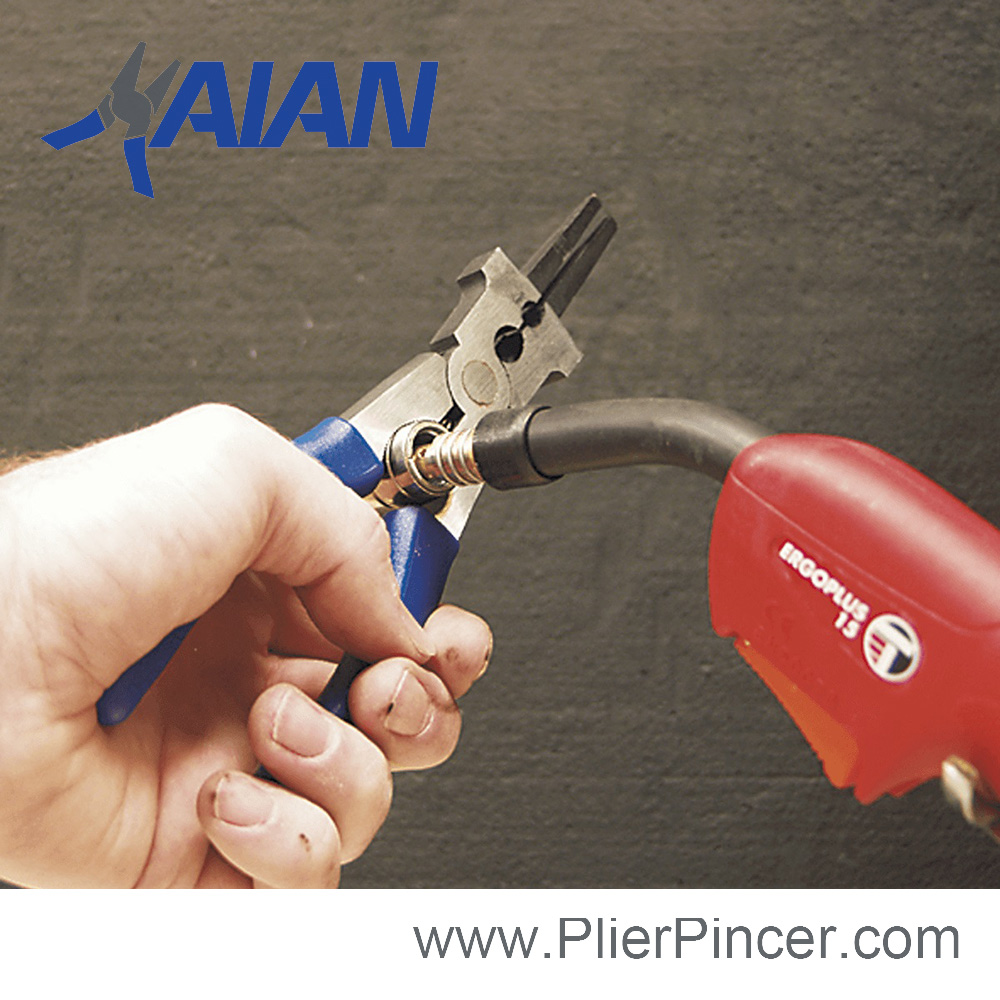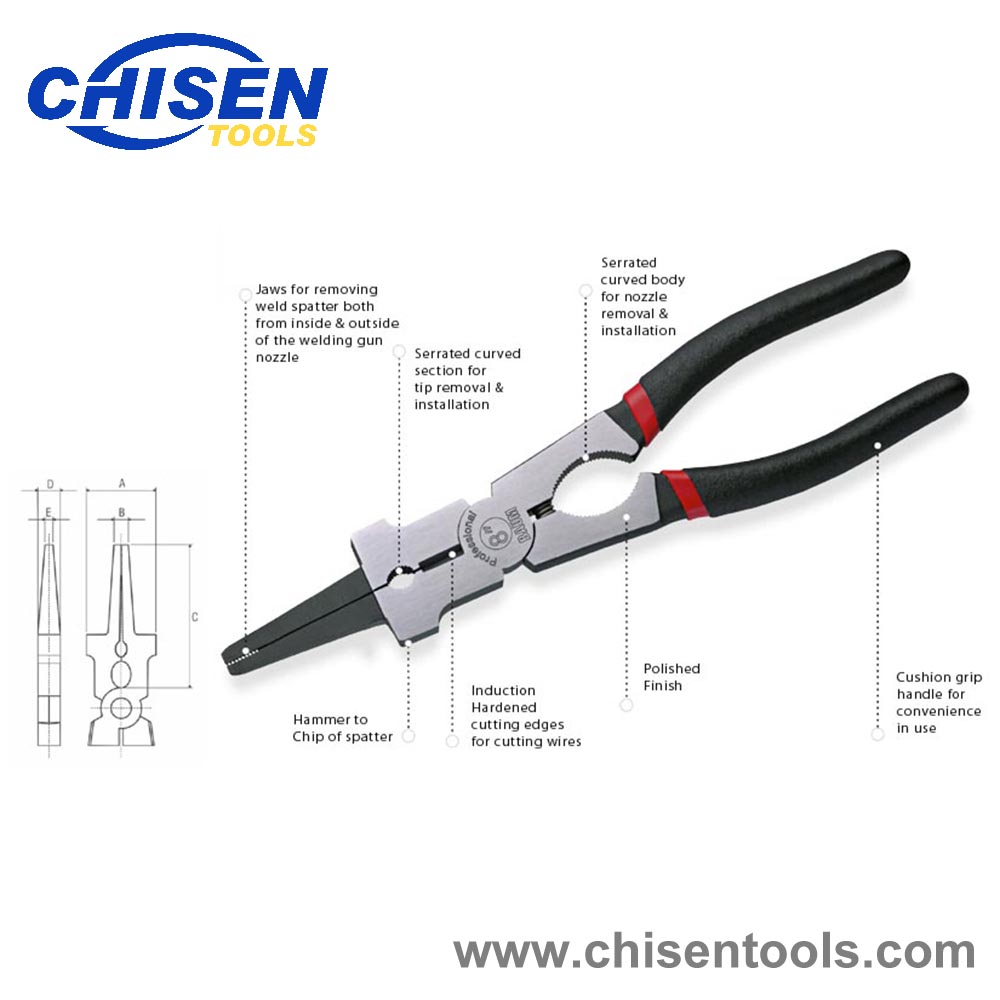
When MIG welding, sometimes you will need to disassemble the welding gun to feed the wire electrode or clean the spatter from the nozzle. Other times, you will need to cut the welding wire to the perfect stickout length. There is a variety of tools you can use to perform these tasks but a nice pair of MIG welding pliers is the best.
What are MIG welding pliers?
Mig welding pliers or simply welding pliers are special multifunction pliers for MIG welding. They are one of the most important welding tools a MIG welder must have in his or her toolbox.
MIG pliers have many essential features for manipulating the mig welder gun including a small and large pipe grip, wire cutters, needle nose jaws, reamer, and hammerhead. Welders use these features to perform the following essential welding functions.
6 Essential Uses of Welding Pliers
You can use welding pliers for many things but these are the most essential uses.

1. Cut welding wire
MIG welding uses a consumable wire electrode to weld. The wire runs from the MIG welder machine through the cable and comes out at the welding gun nozzle.
For you to make a good weld with mig, you need to cut the welding wire to the correct length from the tip of the nozzle. The best stickout length is between a 1/2 inch and a 1/4 inch.
Welding pliers have inline cutters designed for cutting wire electrode to the size. Unlike regular wire cutters, the cutters on MIG pliers are designed to enable you to cut the welding wire to the perfect stick out length without using a tape measure.
The cutters have a hollow section on one side, typically 1/2″ deep, that enables you to leave just 1/2 inch wire sticking out of the nozzle. You only need to cut the wire with the hollow section facing inside against the nozzle.
2. Remove and install the welding gun nozzle
You will need to remove the mig torch nozzle either to feed the welding wire or clean spatter. The nozzle can be too tight or too hot to pull off by hand but mig gun pliers come in very handy.
They have a round gripping section behind the joint for gripping the welding torch nozzle. The circular gripper is serrated to ensure a firm grip on the nozzle so that you can grab and pull it off or twist it to break it loose when it is hot or too tight to come off by hand.
3. Remove and install the contact tip
The contact tip in a mig gun connects the welding wire to the There is a small pipe grip next to the cutters for removing the contact tip. It is also knurled to ensure a tight grip on the contact tip as you unscrew it from the gun.
4. Clean spatter from the nozzle
Over time, spatter builds up on the brass or copper nozzle and can restrict the flow of shielding gas. This affects the quality of the weld and may cause the gun to overheat. Therefore it is good practice to remove the build-up regularly.
The best way to remove welding spatter from the nozzle is by reaming the inside with the needle nose jaws of the welding pliers. You must remove the nozzle first to insert the pliers and clean thoroughly.
Some mig pliers have serrations on the outside of the jaws which help to scrape off the spatter more effectively.
5. Remove weld scale from a welded joint
Although the shielding gas in MIG welding prevents oxidation of the molten weld, you cannot prevent oxidation from forming entirely. A weld scale will still form on the weld bead when the weld puddle cools.
You can remove the weld scale by tapping on it lightly with a slag hammer and brushing it off with a wire brush. Alternatively, you can use a hammer and chisel.
Good thing is that welding pliers have a hammerhead on the side. You can use it to tap on new welds lightly to remove the oxide weld scale. You can also use it together with a chisel if the scale does not come off easily.
The hammer on welding pliers is also useful for knocking things lightly in the workshop. You can use it to
6. Manipulate hot metal
Welding pliers are excellent for holding and manipulating welding parts when welding. You can use the needle nose jaws to grab hot metal pieces to avoid burning your welding gloves. But because the jaws are narrow, they do not grip large workpieces so well.